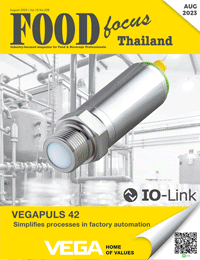5 วิธีการจัดการแมลงและสัตว์พาหะนำโรคแบบบูรณาการ 5 Ways to Integrated Pest Management (IPM)
946 Views |

By: ดร. จิริสุดา สินธุศิริ
Jirisuda Sinthusiri, Ph.D.
Faculty of Public Health and Environment
Huachiew Chalermprakiet University
jiri_ja@yahoo.com
การจัดการแมลงและสัตว์พาหะนำโรคแบบบูรณาการ คือ การป้องกัน ควบคุม กำจัดแมลงและสัตว์พาหะนำโรค โดยผสมผสานเทคนิคด้านการจัดการต่างๆ เข้าไว้ด้วยกัน ซึ่งการจัดการนี้อาจไม่ได้กำจัดแมลงและสัตว์พาหะนำโรคให้หมดไป แต่เป็นการจัดการให้อยู่ในระดับที่สถานประกอบการสามารถควบคุมและยอมรับได้
5 วิธีการจัดการแมลงและสัตว์พาหะแบบบูรณาการ
วิธีการจัดการแมลงและสัตว์พาหะแบบบูรณาการ ประกอบด้วย 5 ขั้นตอนพื้นฐาน ดังนี้
1. สำรวจหรือตรวจสอบ ควรสำรวจให้ทั่วทุกบริเวณงาน โดยจะต้องบันทึกข้อมูลเกี่ยวกับแหล่งอาศัย แหล่งอาหารและอื่นๆ ที่เอื้อต่อการอยู่อาศัยของแมลงและสัตว์พาหะด้วย
2. จำแนกชนิดของแมลงและสัตว์พาหะ เพื่อนำข้อมูลดังกล่าวมาใช้ในการวางแผนการจัดการอย่างเหมาะสม จากนั้นให้กำหนดชนิดและเป้าหมายของสัตว์พาหะที่ตรวจพบ
3. วางแผนและดำเนินการจัดการ โดยใช้อย่างน้อย 2 วิธีการขึ้นไป เช่น ดำเนินการด้วยวิธีการฉีดพ่นสารเคมี รวมถึงวิธีการทางกล และควรมีการดำเนินการทางด้านสุขาภิบาลควบคู่ไปด้วย
4. ติดตามและประเมินผลการดำเนินการ เพื่อประเมินจำนวนแมลงและสัตว์พาหะว่าเป็นไปตามเป้าหมายที่กำหนดไว้หรือไม่
5. ทบทวนแผนการจัดการแมลงและสัตว์พาหะ ว่าพบข้อดีหรือข้อบกพร่องอย่างไร เพื่อเป็นแนวทางในการปรับปรุงและพัฒนาแผนการจัดการแมลงและสัตว์พาหะต่อไป
จากวิธีการจัดการข้างต้น ผู้ที่มีหน้าที่หลักในการจัดการจะต้องรู้จักชนิดของแมลงและสัตว์พาหะที่ก่อให้เกิดปัญหา รวมถึงทราบข้อมูลทางชีววิทยาและพฤติกรรมของสัตว์ดังกล่าว เพื่อหาวิธีการหรือแนวทางป้องกันและกำจัดให้เหมาะสมกับสัตว์พาหะชนิดนั้นๆ นอกจากนี้ ผู้ที่มีหน้าที่หลักควรเดินสำรวจและตรวจสอบพื้นที่ในสถานประกอบการอย่างสม่ำเสมอ เพื่อทราบถึงแนวโน้มหรือความเสียหายของปัญหาที่อาจจะเกิดขึ้น ตลอดจนพิจารณาวิธีการควบคุม ป้องกันและกำจัดที่มีความปลอดภัยและเหมาะสมเพื่อให้เกิดประสิทธิผลสูงสุด
Integrated pest management emphasizes on preventing, controlling, and eliminating pests through the comprehensive combination of various management techniques. This management process may not completely eradicate pests but instead, manage them to an acceptable and controllable level.
5 Ways to Integrated Pest Management
A practical integrated pest management approach consists of 5 basic steps, as follows:
1. Conduct inspections or monitoring in all work areas. Comprehensive information about these habitats, food sources, and other pertinent information conducive to the proliferation of these pests must be recorded.
2. Classifying these pests, which can then be used to formulate the appropriate management planning. After that, the subsequent plan should determine the type and targeted pests.
3. Pest management planning and execution by utilizing at least 2 or more methods, such as spraying pesticides including physical methods, and other sanitary measures should also be applied.
4. Monitor and evaluate the performance to assess the remaining pests and determine whether it meets the targets.
5. Conduct a review of the pest management plan to see the strengths or weaknesses, and use them as future guidelines for further improvement and development of the pest management plan.
From the above methods, the assigned person to handle the primary management responsibility must be well-versed with the different types of pests, including knowledge concerning their biology and behavior, so that the appropriate method or approach can be applied for the prevention and elimination. Moreover, the responsible person should conduct regular inspection rounds to determine pests' tendencies or the extent of the damage that may occur and consider methods of control, safe and proper prevention, and elimination methods for maximum effectiveness.






